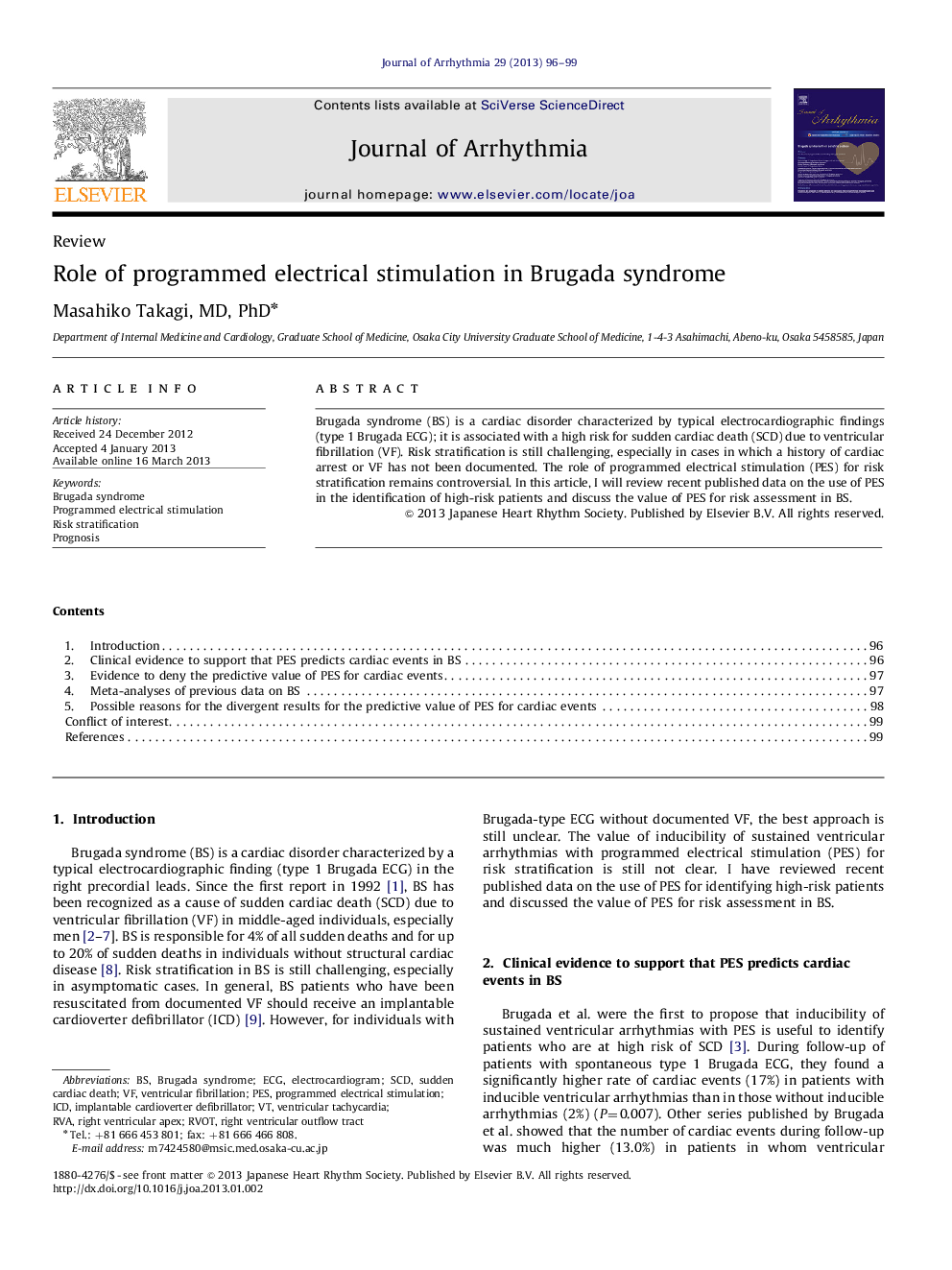| Article ID | Journal | Published Year | Pages | File Type |
|---|---|---|---|---|
| 2957894 | Journal of Arrhythmia | 2013 | 4 Pages |
Abstract
Brugada syndrome (BS) is a cardiac disorder characterized by typical electrocardiographic findings (type 1 Brugada ECG); it is associated with a high risk for sudden cardiac death (SCD) due to ventricular fibrillation (VF). Risk stratification is still challenging, especially in cases in which a history of cardiac arrest or VF has not been documented. The role of programmed electrical stimulation (PES) for risk stratification remains controversial. In this article, I will review recent published data on the use of PES in the identification of high-risk patients and discuss the value of PES for risk assessment in BS.
Keywords
Related Topics
Health Sciences
Medicine and Dentistry
Cardiology and Cardiovascular Medicine
Authors
Masahiko Takagi,
